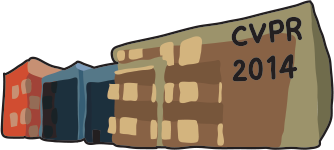-
Human vs. Computer in Scene and Object Recognition
AbstractSeveral decades of research in computer and primate vision have resulted in many models (some specialized for one problem, others more general) and invaluable experimental data. Here, to help focus research efforts onto the hardest unsolved problems, and bridge computer and human vision, we define a battery of 5 tests that measure the gap between human and machine performances in several dimensions (generalization across scene categories, generalization from images to edge maps and line drawings, invariance to rotation and scaling, local/global information with jumbled images, and object recognition performance). We measure model accuracy and the correlation between model and human error patterns. Experimenting over 7 datasets, where human data is available, and gauging 14 well-established models, we find that none fully resembles humans in all aspects, and we learn from each test which models and features are more promising in approaching humans in the tested dimension. Across all tests, we find that models based on local edge histograms consistently resemble humans more, while several scene statistics or "gist" models do perform well with both scenes and objects. While computer vision has long been inspired by human vision, we believe systematic efforts, such as this, will help better identify shortcomings of models and find new paths forward.
Related Material
[pdf][bibtex]@InProceedings{Borji_2014_CVPR,
author = {Borji, Ali and Itti, Laurent},
title = {Human vs. Computer in Scene and Object Recognition},
booktitle = {Proceedings of the IEEE Conference on Computer Vision and Pattern Recognition (CVPR)},
month = {June},
year = {2014}
}
These CVPR 2014 papers are the Open Access versions, provided by the Computer Vision Foundation.
Except for the watermark, they are identical to the accepted versions; the final published version of the proceedings is available on IEEE Xplore.
Except for the watermark, they are identical to the accepted versions; the final published version of the proceedings is available on IEEE Xplore.
This material is presented to ensure timely dissemination of scholarly and technical work.
Copyright and all rights therein are retained by authors or by other copyright holders.
All persons copying this information are expected to adhere to the terms and constraints invoked by each author's copyright.

